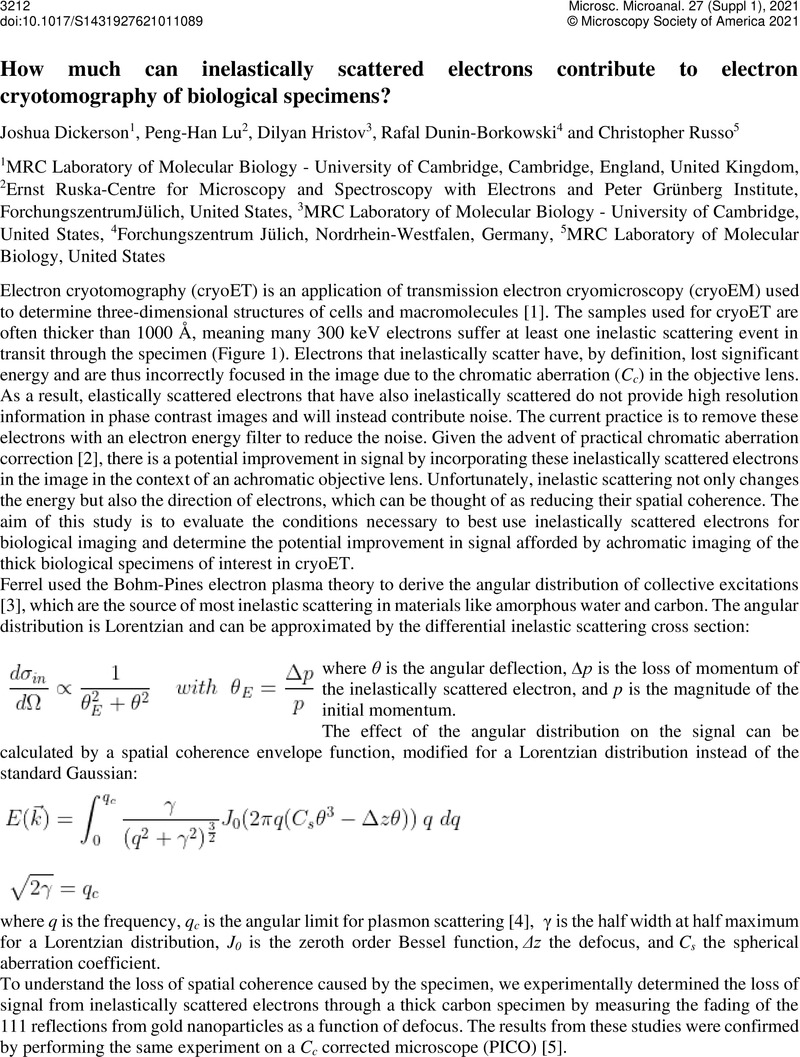No CrossRef data available.
Article contents
How much can inelastically scattered electrons contribute to electron cryotomography of biological specimens?
Published online by Cambridge University Press: 30 July 2021
Abstract
An abstract is not available for this content so a preview has been provided. As you have access to this content, a full PDF is available via the ‘Save PDF’ action button.

- Type
- Cryo-electron Tomography: Present Capabilities and Future Potential
- Information
- Copyright
- Copyright © The Author(s), 2021. Published by Cambridge University Press on behalf of the Microscopy Society of America
References
Gan, L., Jensen, G. J., Electron tomography of cells, Quarterly Reviews of Biophysics 45 (1) (2012) 2756.CrossRefGoogle ScholarPubMed
Kabius, B., Hartel, P., Haider, M., Mller, H., Uhlemann, S., Loebau, U., Zach, J., Rose, H., First application of Cc-corrected imaging for high-resolution and energy-filtered TEM, Journal of Electron Microscopy 58 (3) (2009) 147–155.CrossRefGoogle ScholarPubMed
Ferrell, R. A., Angular dependence of the characteristic energy loss of electrons passing through metal foils, Phys. Rev. 101 (1956) 554–563. doi:10.1103/PhysRev.101.554. URL https://link.aps.org/doi/10.1103/PhysRev.101.554Google Scholar
Ritchie, R. H., Plasma losses by fast electrons in thin films, Phys. Rev. 106 (1957) 874–881. doi:10.1103/PhysRev.106.874.Google Scholar
Tillmann, K., Barthel, J., Houben, L., FEI titan G3 50-300 PICO, Journal of large-scale research facilities JLSRF 1 (11 2015).CrossRefGoogle Scholar
Salvat, F., Jablonski, A., Powell, C. J., ELSEPA--Dirac partial-wave calculation of elastic scattering of electrons and positrons by atoms, positive ions and molecules, Computer Physics Communications 165 (2) (2005) 157–190.Google Scholar



